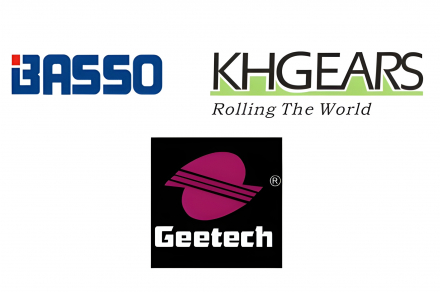News
Taiwan's 3 Industries Navigate Challenges for New Chances


Add to my favorite
2025-08-15
Cost and Tariff Pressures Facing Taiwan:
Taiwan's fastener, tool, and component industries have faced rising operational costs and intense low-price competition from overseas in recent years, resulting in a significant drop in revenue. Specifically, the fastener industry in Taiwan, which was originally already dealing with a 25% tariff on steel and aluminum, has seen that tariff increase to 50%. This has led to an overall revenue decline of roughly 10% for the fastener industry.
Meanwhile, across different other industries, some products are currently subject to steel and aluminum tariffs of 50%, while others face the reciprocal tariff (pegged at 20% as of August 1).
At the time of writing, Taiwan and the United States were engaged in new negotiations following the 20% reciprocal tariff announcement. Because many negotiation details remain undisclosed, the outlook is still uncertain. It is too early to definitively assess the long-term impact of these developments.
These three industries largely depend on exports and have built an integrated supply chain, making them an economic driver that Taiwan takes pride in and a model for industrial development. However, there have been multiple challenges in recent years. Industry players now stand on the precipice of history. Beyond monitoring economic trends closely, it would be wise to remember this: times of drastic change in the global business environment often present the best opportunities for companies to outpace their competitors.
Four Challenges—Tariff, Exchange Rate, Carbon Tax, Economic Climate;
Steady Transformation and New Opportunities to Enter High-Tech Supply Chains:
Looking ahead, four key challenges threaten the livelihoods of Taiwan's fastener, tool, and component industries. First is the “Trump tariff”. Since these tariffs were announced, Taiwanese companies have been struggling and are now thinking about exploring markets beyond the United States. The era of large-volume inventories and mass orders is over; the new reality demands smaller, more diversified, agile production with quick turnaround times and rush orders. With rising tariff costs, U.S. importers are reducing their purchase volumes, inventory levels, and orders placed on Taiwan to maintain cash flow and sustain normal business operations to cope with future tariff changes. For Taiwanese suppliers, “make-to-order” production is set to become the future standard going forward.
At this moment, Taiwanese companies should avoid focusing heavily on cross-field, cross-regional, or cross-industry transformations. These approaches comparatively consume considerable time, labor, and resources—luxurious in today's volatile environment. For example, industry insiders have told Fastener World that investing in manufacturing facilities in Southeast Asia requires at least 1 billion New Taiwan dollars—a significant cost. In such an unpredictable era, pursuing overseas diversification is not an easy path. A more advantageous approach for Taiwanese companies now is to upgrade and optimize their most competitive products, processes, business structures, and services. The current market environment favors steady, well-focused investments rather than high-risk ventures.
Second is the “exchange rate.” Over the recent years, the New Taiwan Dollar (NTD) has been one of the strongest and most rapidly appreciating currencies globally. On July 4, it briefly reached 28.8 NTD to 1 USD. Profit margins in Taiwan's hardware component sector generally range from 10% to 15%, while the fastener industry averages around 15%. When the NTD appreciates from 32 NTD to 30 NTD per USD, it eats up a large portion of these thin margins when it comes to exporting from Taiwan. If the NTD continues to appreciate past critical levels like 30, 29, or even 27 without timely adjustment, it could trigger a wave of massive temporary business closures. Industry players shared with Fastener World their hope that the USD/NTD exchange rate will hold steady near 32 by the year-end to help sustain operations in these three industries.
Third is “CBAM” (Carbon Border Adjustment Mechanism). For the fastener industry, if the EU begins imposing carbon taxes starting in 2026, Taiwanese businesses could see their wire material costs increase by 10% to 20%. This EU carbon tax may prompt other countries to follow suit, creating even greater challenges that will be difficult to avoid. However, there is still a glimmer of hope: companies need to closely watch whether the EU will announce exemptions for downstream fastener processes from the carbon tax in the third quarter of this year.

Fourth is the “Economic Climate.” Statistics signal a global economic slowdown. Tariffs and wars have heightened economic uncertainty, dampening investment and consumer demand. Meanwhile, climate change has led to frequent natural disasters, forcing governments to redirect budgets from economic stimulus to disaster relief, further slowing growth. In the automotive market, the declining sales of gasoline-fueled vehicles have reduced demand for fasteners, tools, and components. Additionally, the shift from internal combustion engines to electric vehicles dramatically cuts the use of higher-margin fasteners used in engines, impacting fastener industry revenues. The most effective way to revive economic growth would be through a new round of global quantitative easing—similar to what the U.S., Japan, and the EU successively implemented from 2008 to 2015—to stimulate investment and procurement across global industries.
Furthermore, while TSMC has become the frontrunner driving Taiwan's economic growth, a key challenge for these three industries is finding ways to break into high-tech supply chains—such as those for AI robotics, robotic arms, and electric vehicles—and leverage these “giants' shoulders” to uncover new business opportunities.
Taiwan's Resilient and Sustainable Vitality:
Taiwan's fastener, tool, and component industries have been exporting worldwide for over 50 years. Many companies have successfully weathered global economic downturns including the financial crisis, SARS, trade wars, the COVID-19 pandemic, and the Russia-Ukraine conflict. There is no need to view the current challenges for Taiwanese industries too pessimistically. Fasteners, tools, and components, being essential goods critical to everyday life, still have opportunities to find a turning point and thrive anew.
零組件
關稅
匯率
碳稅
Component
Tariff
Exchange Rate
Carbon Tax
扣件
國際展會
惠達雜誌
匯達實業
外銷媒合
廣告刊登
螺絲五金
五金工具
緊固件
台灣扣件展
印度新德里螺絲展
越南河內螺絲展
墨西哥瓜達拉哈拉螺絲展
美國拉斯維加斯螺絲暨機械設備展
2026美國鳳凰城螺絲暨機械設備展
波蘭克拉科夫螺絲展
義大利米蘭螺絲展
德國司徒加特螺絲展
德國杜塞道夫線材展
Fastener
Hand Tool
Hardware
Component
Fastener World
Wire Dusseldorf
Fastener Fair India
Fastener Fair Vietnam
Fastener Fair Mexico
Fastener Poland
Fastener Fair Italy
Fastener Fair Global
READ NEXT
2025-08-27

Subscribe







